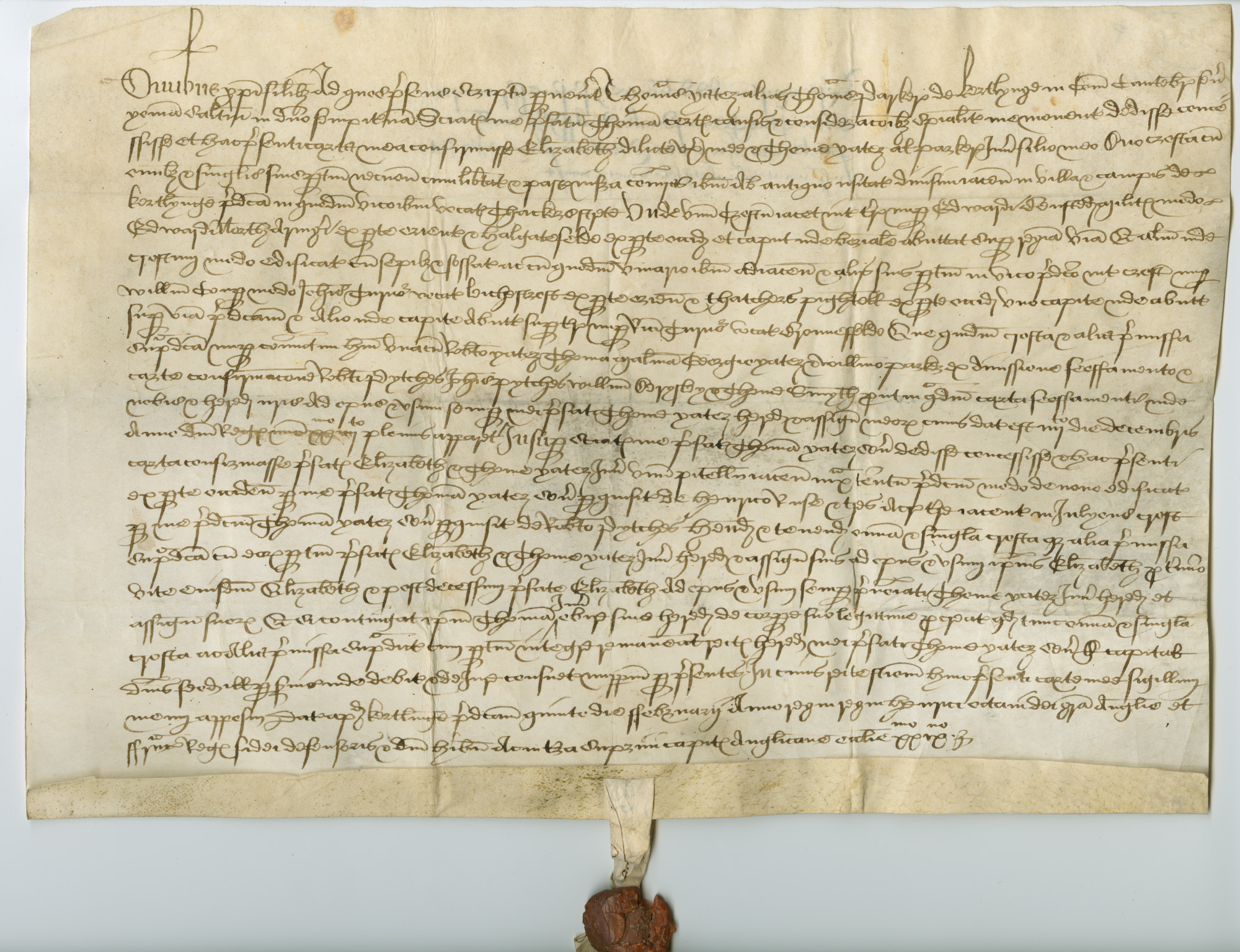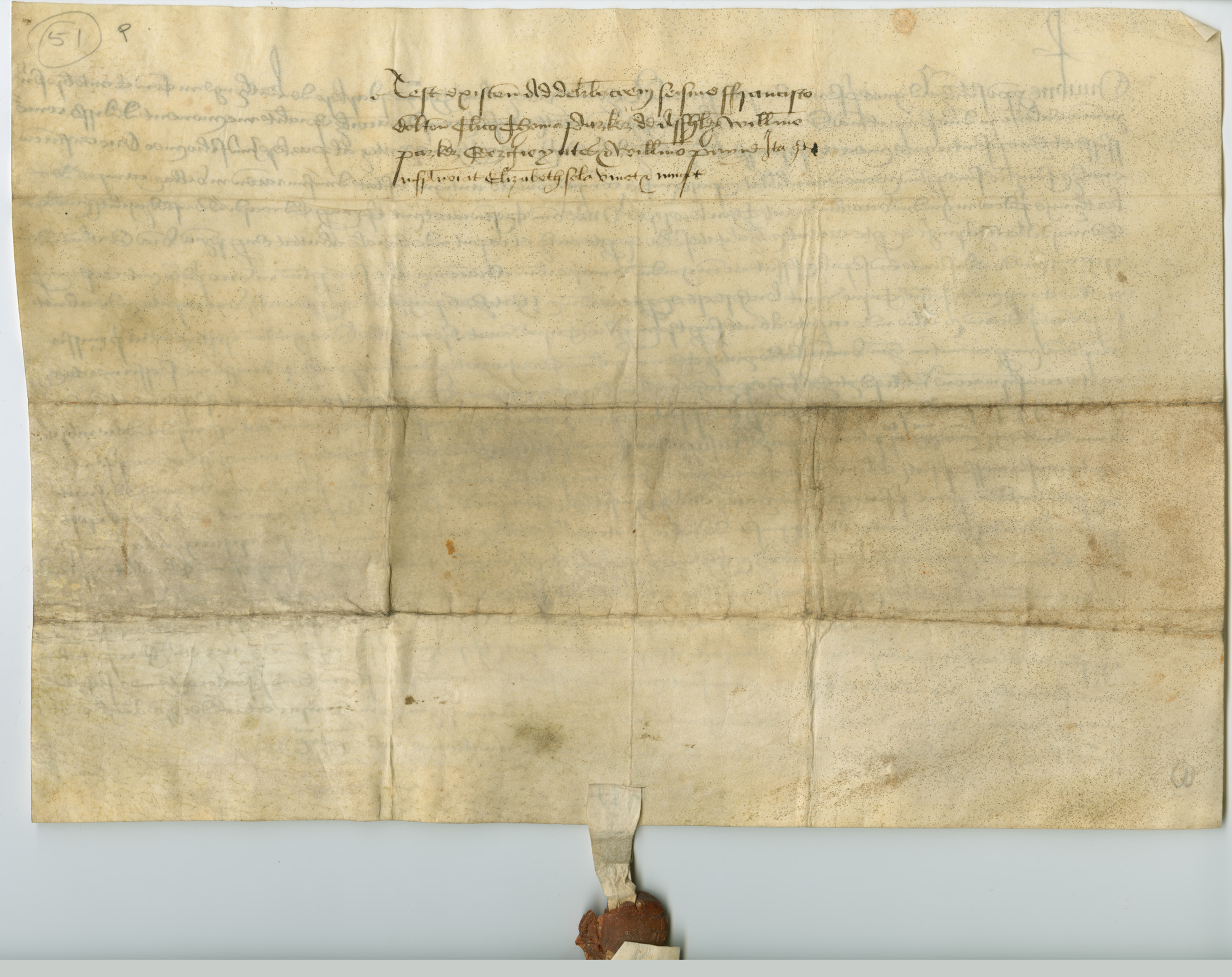Seals were an early security measure, used much like a signature to verify the authenticity of a document. A blob of wax was applied to a document and a small carved object impressed into the wax, leaving an imprint. Confusingly, the word seal refers to both the seal die/matrix (for example a ring) used to create the impression as well as the wax seal impression placed on the document.
As a security measure seals functioned quite well - they were harder to forge than a simple written document, although some medieval forgeries definitely did occur. The pictorial nature of the seal was tailored to a semi-literate society who would have been unlikely to be able to spot differences in a signature. The pictures carved into the seals also allowed an individual to express themselves, and make strong statements about personality, rank and power through small alterations to standard depictions.
By the high medieval period in western Europe, two types of seal existed, the personal seal and the official seal. Personal seals were used to close rolled up letters to prove the letter is still private and unread upon arrival. This functions similar to the way modern envelopes do - it takes a lot of effort to open a letter undetected, and deters all but the most persistent intruder. Personal seals also began to be used like a signature on small business and credit transactions - probably similar to using a credit card or signing an interest free sale today.
Official seals developed out of the personal seal, but were used on documents intended to be consulted multiple times, where the aim was not to prevent the document being read but to authenticate it as genuinely from you, like a signature on a modern legal document. Seals used to seal a letter closed are designed to break upon opening the letter, so a change in technology to preserve the seal was developed. Various forms of attaching the seal to the parchment were tried, developing into the seal tag - a strip of parchment or braid that attached the seal to the document in a way that could not easily be tampered with.
Personal seals tended to be small objects that could be easily carried around, such as a ring or pendant. Official seals were larger, sometimes double sided, and used only on official documents. Official seals were more formulaic and represented a persons rank, role and sometimes allegiances. Like a modern business logo (and motto), they could tell you a certain amount about the person's business aims if you knew the art of interpreting them.
Lower ranked people might only have a personal seal to use on all documents, personal or official, the official seal was a marker of status and position. Surviving seals matrices and seal impressions are mostly of the official kind, as the kinds of uses of personal seals are rather ephemeral.
My favourite period, the 12th Century marks the genesis of widespread sealing in England, when conventions were being formed, and experiments with the practises and material objects of sealing common. It also marks a rapid increase in the formalisation of legal documents into charters and agreements - a transition that began in the 11th C to a culture which records increasing amounts of information in writing, flourishes in the 12th C. Seals represent an important part of that transition because they provided an authentication for documents, and a form of authentication that was not a written word for those who were still suspicious of the new literacy. Adding your seal to a document added a degree of ceremony to an agreement, just as signing a document in front of witnesses does today. Such a ceremony was necessary to give this proposed replacement for old ceremonial practises associated with verbal agreements the same weight of ceremony.
By 1200 almost every man (or independent woman) who owned property or was in business in England would have had a seal, although many would have only a small multipurpose private seal rather than separate private and official ones. Seals were used in everyday transactions like agreements with moneylenders or pawnbrokers, and transactions involving small amounts of money, however few documents of this kind of transaction have survived. This is a big contrast to earlier periods - in the 10th C official sealing seems to have mostly been the province of the king, while in the 11th it has extended to the upper nobles, and in the early 12th C it seems to have been a noble only activity. Before these times, in Anglo-Saxon England, agreements were largely verbal ("my word is my bond"), and did not require writing down.
I believe continental western European practises mirror this fairly well, although possibly with a slight time lag. Sealing practises appears to be one of these practises that actually did have major innovations in England that spread elsewhere, namely the heightened use of seals and the development of the seal tag. This doesn't appear to be a solely Anglo Saxon or Norman thing, but rather a development that stretched across the transition between cultures. One can only speculate that perhaps the mixing of cultures was a catalyst for this development.
However, while the official sealing culture and seal tags may be an English innovation, there was a continental tradition of sealing official documents directly onto parchment, which can be seen on some documents of Charlemagne and early Papal Bulls. And the tradition of sealing letters close, I've heard dates back to roman times. However as a textile enthusiast, and 12th C western European reenactor, my research focus is on the wonderful invention of the seal tag, and the social traditions of sealing in the 12th Century.
This is my introductory talk for a series of posts about seals and seal tags. I've been looking into this for a while, but have only escalated my research and writing up lately, prompted by the scribes guild of Lochac developing new writs for presentation of AOA's (the SCA's lowest ranking award). Due to the rapidity with which I'm writing this up there will be details which I will get wrong or make inferences that are misleading. I'm afraid I may sound more authoritative than I really am, and my referencing will not be all I wish it could be. Please forgive me, I hope that having this information more widely available will outweigh my small errors. I also encourage you dear readers to point out my errors, discuss anything you think I might be a little shortsighted on, and ask questions, etc. I really appreciate having people do so as a quality check on my work, and so that I can have an interesting discussion on these matters. I always love the chance to discuss research, and have discovered the most interesting things because someone asked a simple question.
If you wish to find more posts in this series, but not to hear about my other textile exploits, look for the overlapping tags of "seals" (about seal dies, imprints and extant examples), "seal tag" (about seal tags including extant examples and how to's), and "sealing practises" (why people used seals - the sociological aspect).


 Feoffment by Thomas Yates alias Parker to Elizabeth, his wife, and Thomas Yates, Jr., his son, of a croft in Kirtling, Cambridgeshire.
Feoffment by Thomas Yates alias Parker to Elizabeth, his wife, and Thomas Yates, Jr., his son, of a croft in Kirtling, Cambridgeshire. 


